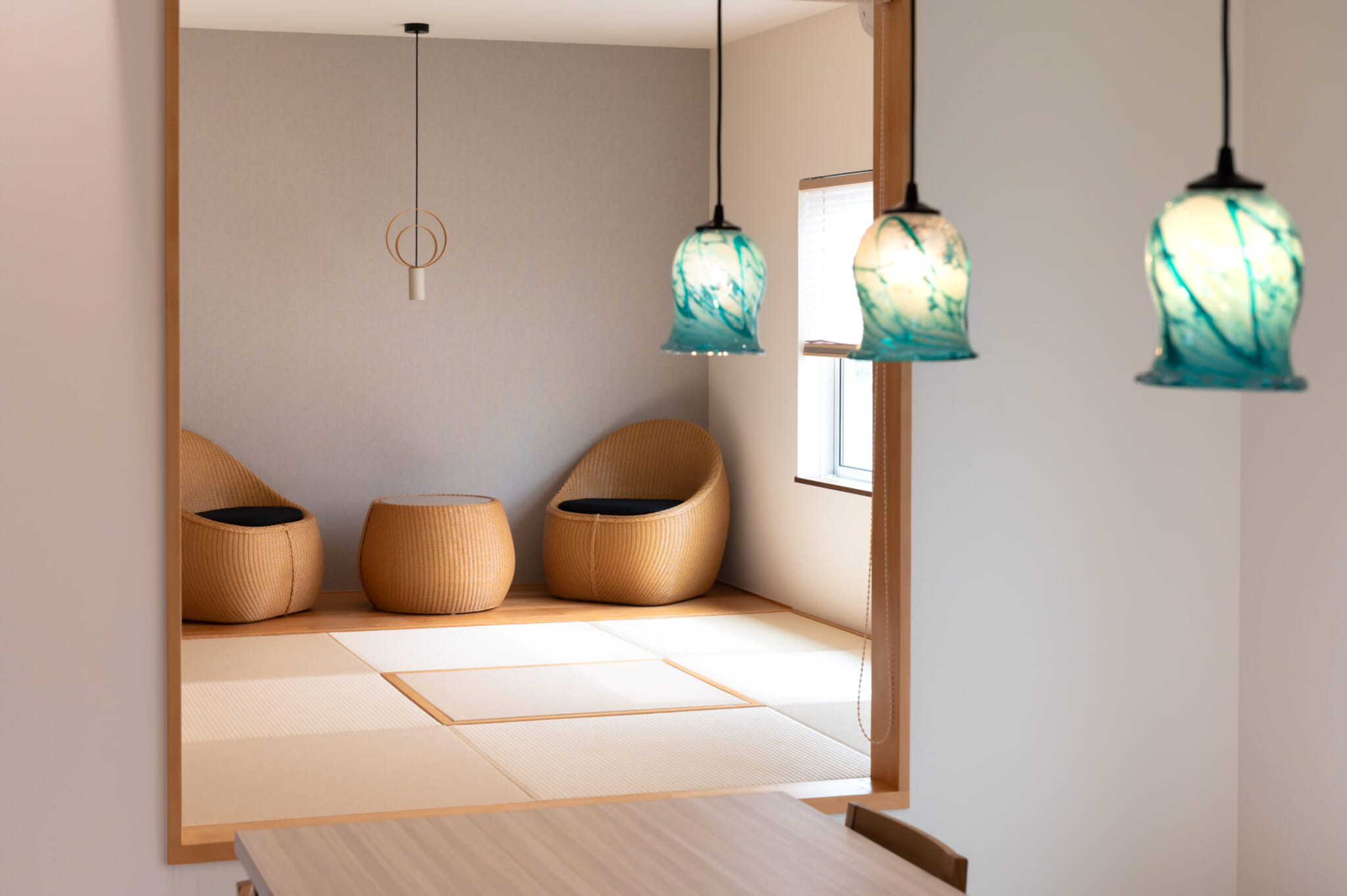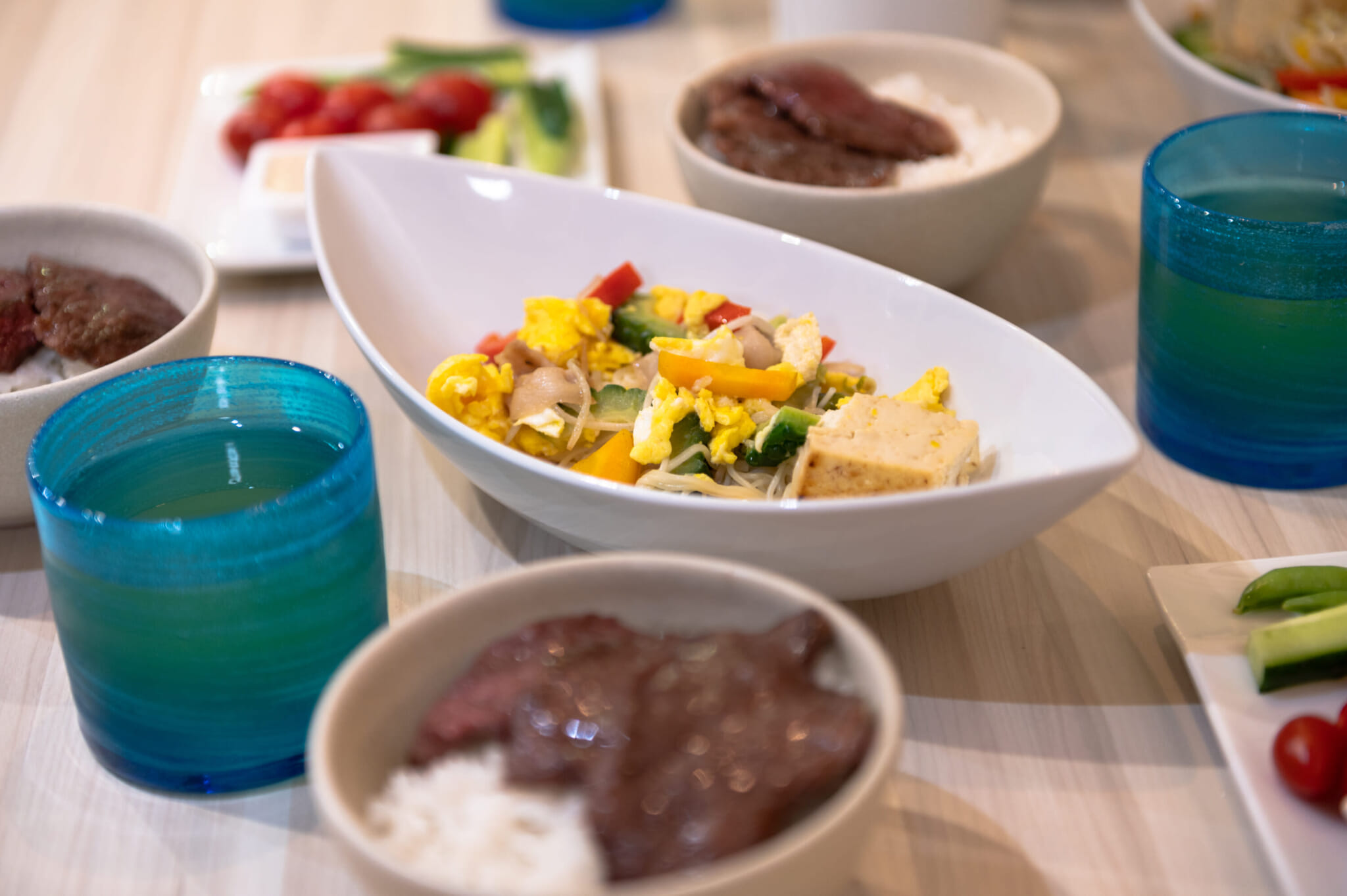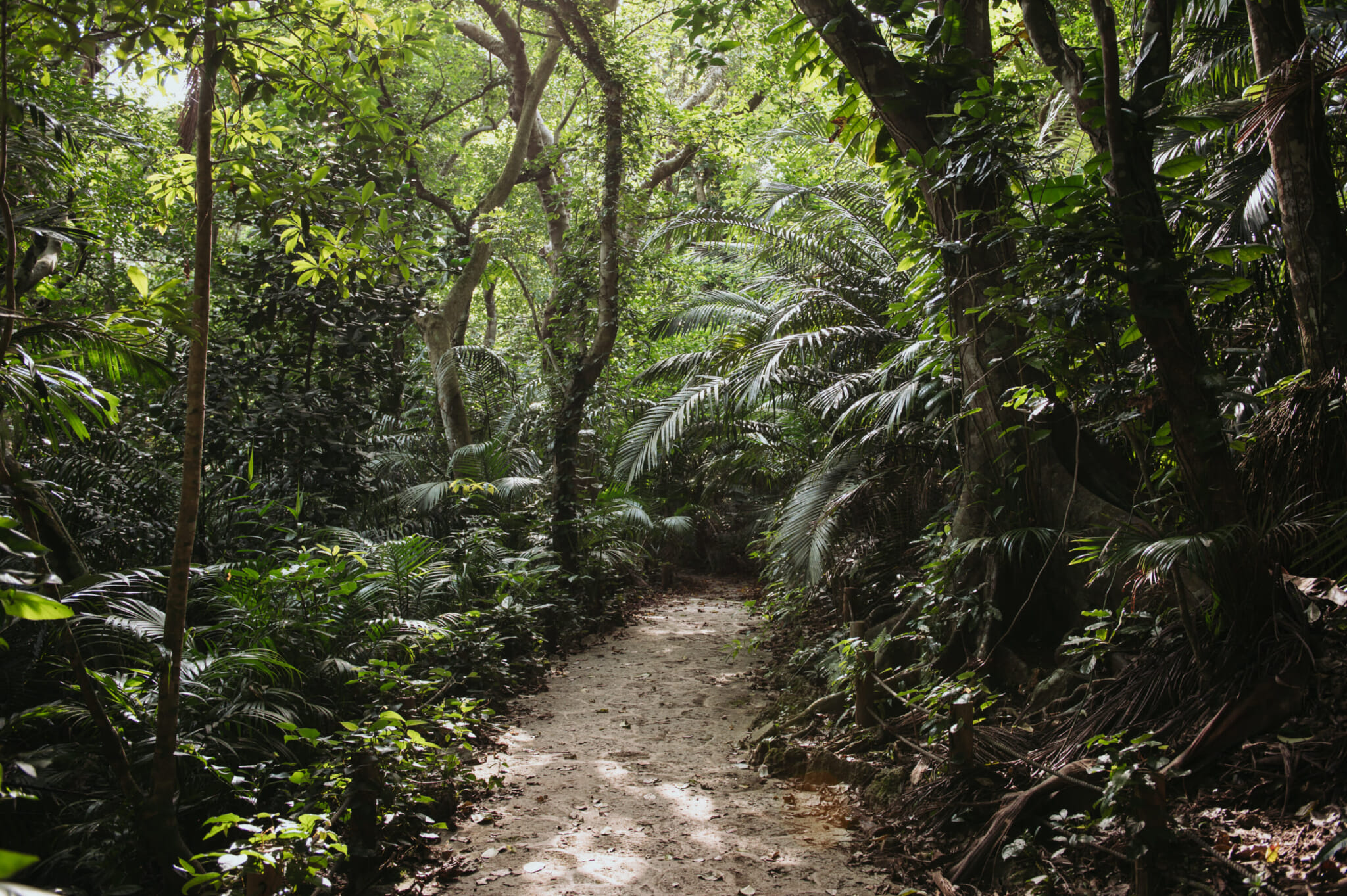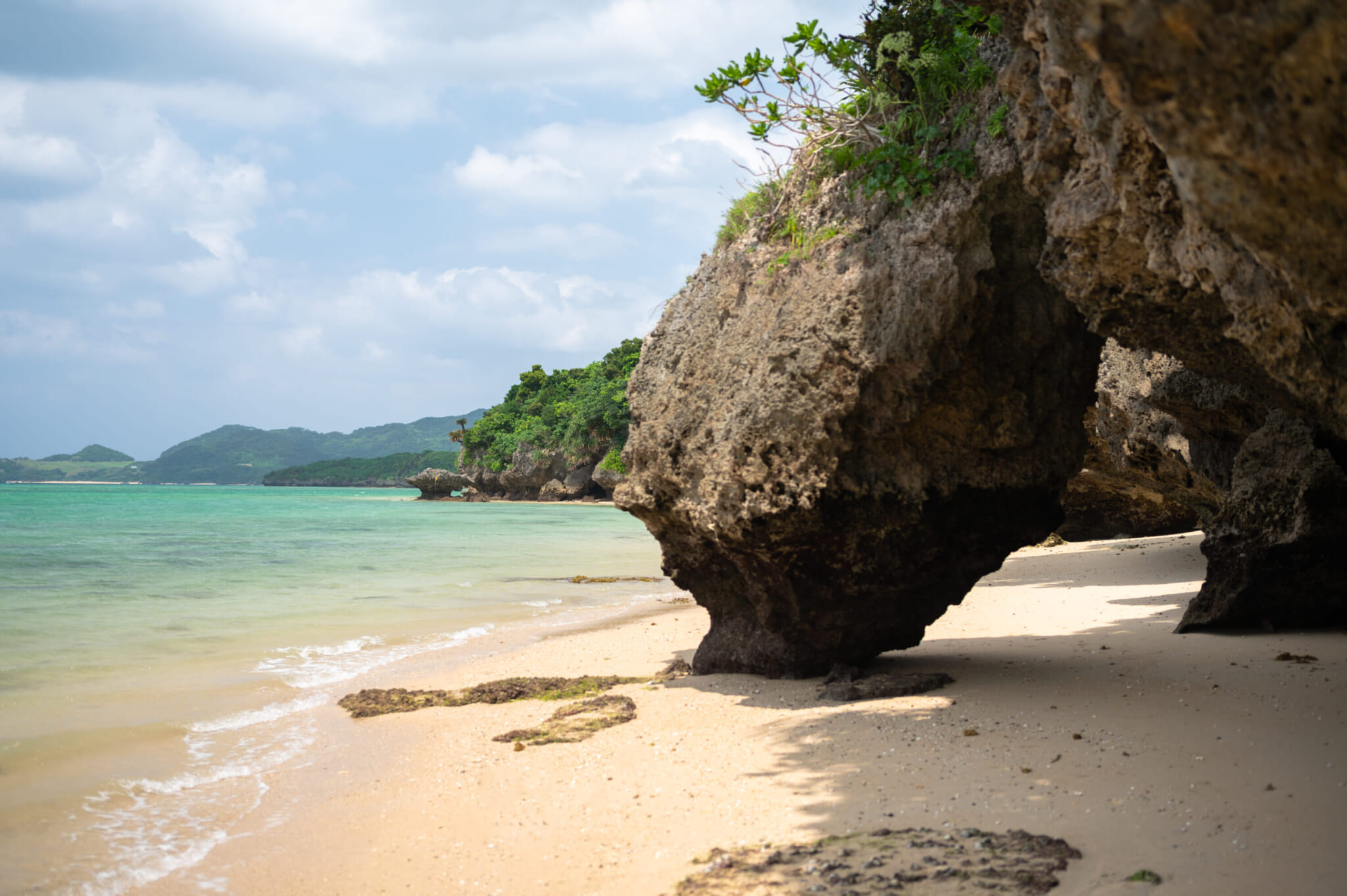A fluffy kanji character pronounced “ten” and meaning “sky” or “heaven” in Japanese marks the entrances to the cozy holiday villas Ten Arakawa and Ten Kabira. Created by the renowned calligrapher Souun Takeda, who loves clouds, the character is the perfect symbol in many ways, as these villas provide visitors with an undisturbed slice of bliss on Ishigaki Island, which itself is often described as a paradise.
Ten is a small family business founded just a year ago by Ritsuko Furuta. After visiting Ishigaki every year for almost three decades, Furuta uprooted her life from Tokyo forever. She found Ishigaki especially healing for her child with special needs, and since moving to the island, she has started a hospitality business to share that healing power with others.
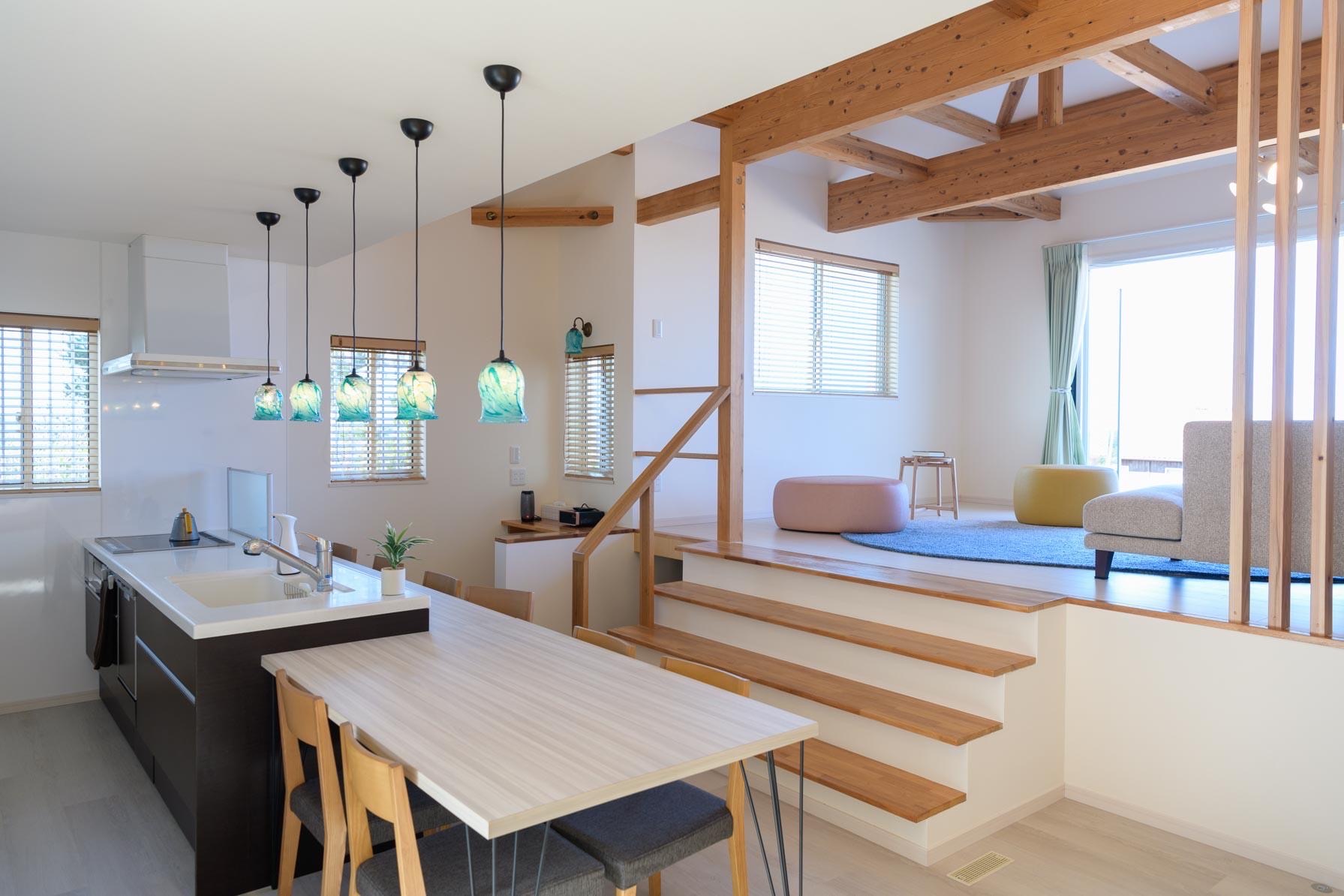
On-site Pleasures: Relax and Recharge
Both Ten Arakawa and Ten Kabira are private, accessible, well-designed spaces with a personal touch to everything from the traditional Ryukyu glassware and pottery to the original artworks inspired by Ishigaki’s natural blessings. Ten Arakawa is located near Kannonzaki Beach and Fusaki Beach, while Ten Kabira — smaller but boasting a private pool overlooking the coast — is not far from the iconic Kabira Bay and Blue Cave.
You’ll immediately feel at home in either villa, whether lounging on the properties’ decks or cooking up a storm in their fully equipped kitchens. Staying in a private residence allows you to savor time and space so you can bask in a different kind of freedom, sharing moments and a homemade meal with your people. Explore the island’s direct-sales centers and supermarkets, and pick up local specialties like goya (bitter gourd), Ishigaki wagyu beef, Okinawan Agu pork, island tofu and Ishigaki-grown tropical fruits for a fantastically fresh feast.
Situated away from the island’s busy downtown area, both houses are surrounded by nature. Listen for birdsong and the chirping of frogs, the rustle of the wind and the waves in the distance. At night, look up to admire the star-spangled sky. The absence of light pollution earned Ishigaki and nearby Iriomote Island a designation as an International Dark Sky Park — the first in Japan — by the International Dark Sky Places Program. Provided that the sky is clear and there’s no moon, you may see the Milky Way, called Tingara in the local dialect.
Locals have been singing about the starry skies, the blue ocean and island life for centuries, and if you feel inspired to sing, too, there are microphones for karaoke in the villas, as well as projectors. The Ten staff can also book a private sanshin performance, which is how we met Ishigaki-born and raised Misato Takahashi, who inherited her traditional three-stringed, snake-skin instrument from her grandfather. In addition to playing for us, she taught us the stories behind the old songs that touch people’s hearts to this day.
Off-site Adventures: Chase the Heavenly Ishigaki Blue
Rested and recharged, it’s time to discover the sights and colors of Ishigaki. The Ten staff can book private snorkeling or fishing tours for the ultimate no-stress experience. A laconic but sweet fisherman who goes by Ken-chan will take you to the best coral reefs and blast retro Japanese songs from his boat as you snorkel near Taketomi Island. Coming face-to-face with colorful fish dashing around the corals will leave you feeling as if the ocean and sky are yours and yours alone.
Once out of the turquoise and blue waters and back on firm land, drive inland to explore Ishigaki’s flora. Head to Nagura Amparu, where fresh water and salt water meet, to see the mangrove forest, a Ramsar-designated Wetland of International Importance. Also visit the Yonehara Palm Grove, a designated National Natural Monument near Ten Kabira, to see the rare Yaeyama species of palm tree. A nearby shop sells fresh seasonal fruit and sugar cane juice that’s a must-try.
Next, wander wide-eyed into Yoneko-yaki Pottery Studio Shisa Park like a tropical Alice in a brand-new wonderland of giant mushrooms, monsters and mythical Okinawan lion-dog creatures called shisa. A perfect blend of nature and culture, this whimsical park’s Taro Okamoto-esque psychedelic displays subtly increase against the lush mountain backdrop. Admission is free.
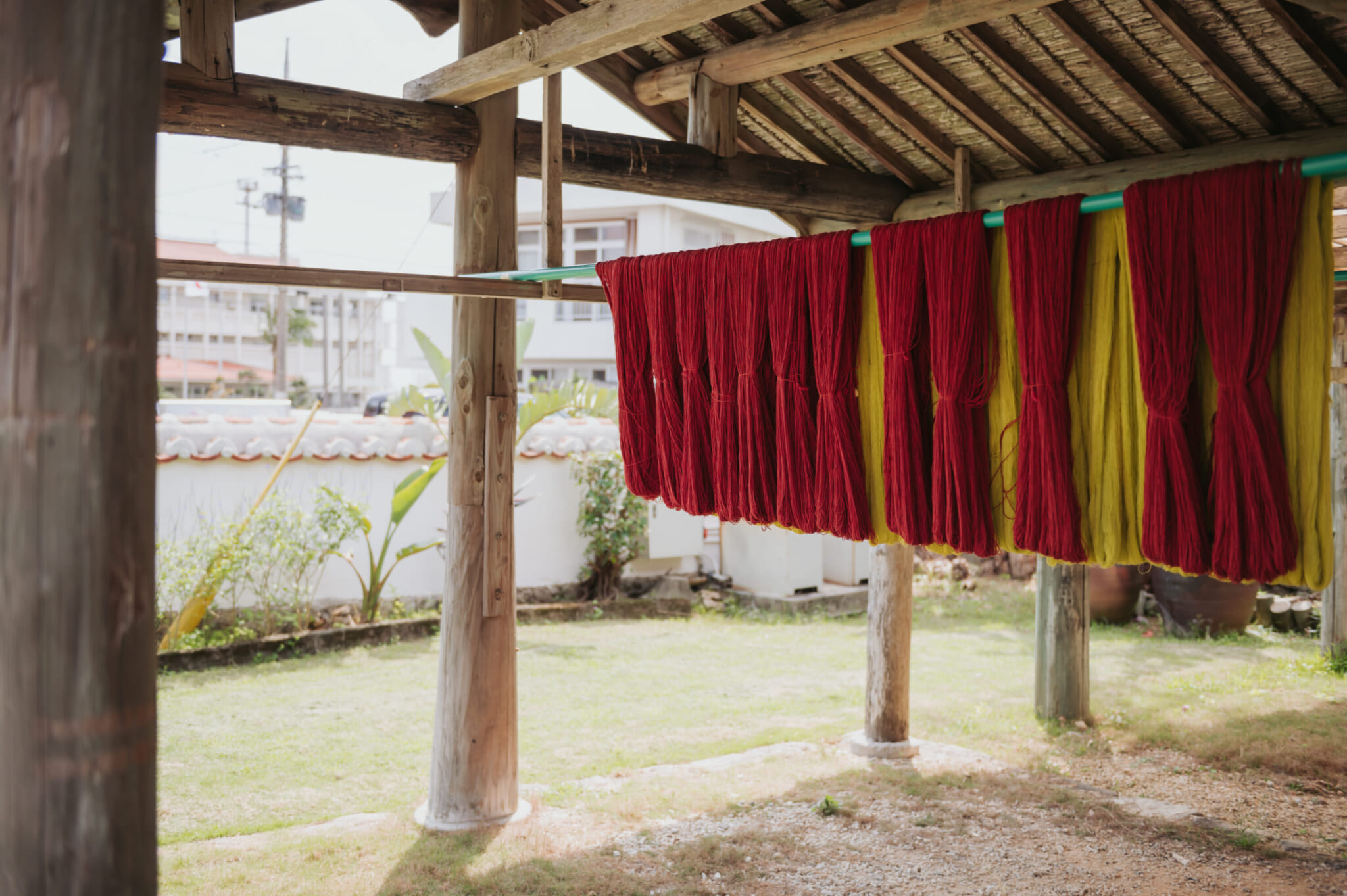
Photo by Lisa Knight
Making a traditional craft is a great way to tap into Ishigaki’s distinct culture, which stands out from that of the rest of Okinawa. Create a piece of traditional Minsah weaving, characterized by its alternating four-square and five-square pattern that symbolizes eternity, at the Minsah Kogei Museum, or buy woven goods from the on-site shop. The museum displays naturally dyed threads drying outside and weaving looms inside.
Also be sure to drop by Ishigaki-yaki, a pottery studio by Haruhiko Kaneko. The master ceramist, whose artworks are part of the public collection at the British Museum as well as collections at several museums in Paris and other parts of the world, fuses ceramics and glass to create dark, star-speckled pottery with blue-glazed interiors. Try your hand at making your own work of art, which will later be baked, glazed and mailed to you so you can hold on to a piece of Ishigaki blue.
When the blue of the day turns to inky night, head to a local izakaya for a drink of awamori, an Okinawan alcoholic beverage, paired with unique culinary delights — and maybe even a live sanshin performance. All you need to do is drink, sing, dance, be merry and allow yourself to be swept up into the welcoming joviality of the locals.
To book a stay, visit the official website for Ten Arakawa and Ten Kabira.

